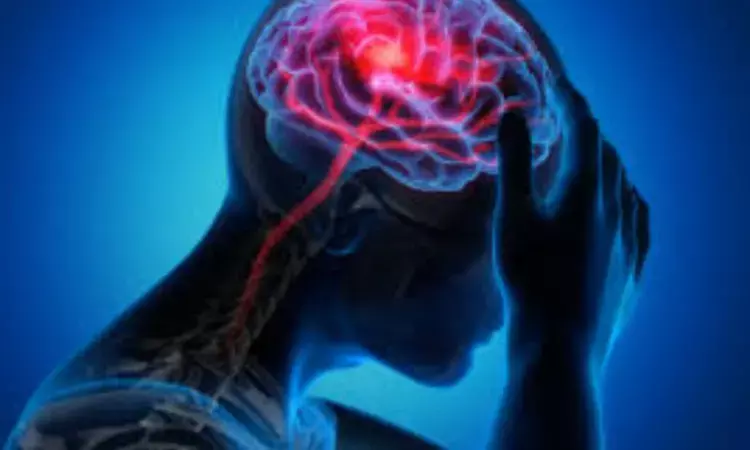- Home
- Medical news & Guidelines
- Anesthesiology
- Cardiology and CTVS
- Critical Care
- Dentistry
- Dermatology
- Diabetes and Endocrinology
- ENT
- Gastroenterology
- Medicine
- Nephrology
- Neurology
- Obstretics-Gynaecology
- Oncology
- Ophthalmology
- Orthopaedics
- Pediatrics-Neonatology
- Psychiatry
- Pulmonology
- Radiology
- Surgery
- Urology
- Laboratory Medicine
- Diet
- Nursing
- Paramedical
- Physiotherapy
- Health news
- Fact Check
- Bone Health Fact Check
- Brain Health Fact Check
- Cancer Related Fact Check
- Child Care Fact Check
- Dental and oral health fact check
- Diabetes and metabolic health fact check
- Diet and Nutrition Fact Check
- Eye and ENT Care Fact Check
- Fitness fact check
- Gut health fact check
- Heart health fact check
- Kidney health fact check
- Medical education fact check
- Men's health fact check
- Respiratory fact check
- Skin and hair care fact check
- Vaccine and Immunization fact check
- Women's health fact check
- AYUSH
- State News
- Andaman and Nicobar Islands
- Andhra Pradesh
- Arunachal Pradesh
- Assam
- Bihar
- Chandigarh
- Chattisgarh
- Dadra and Nagar Haveli
- Daman and Diu
- Delhi
- Goa
- Gujarat
- Haryana
- Himachal Pradesh
- Jammu & Kashmir
- Jharkhand
- Karnataka
- Kerala
- Ladakh
- Lakshadweep
- Madhya Pradesh
- Maharashtra
- Manipur
- Meghalaya
- Mizoram
- Nagaland
- Odisha
- Puducherry
- Punjab
- Rajasthan
- Sikkim
- Tamil Nadu
- Telangana
- Tripura
- Uttar Pradesh
- Uttrakhand
- West Bengal
- Medical Education
- Industry
Patients who underwent TIA have increased risk of subsequent stroke in the long-term, unravels study

A new study published in the Journal of American Medical Association showed that patients who have experienced a transient ischemic attack (TIA) or a mild stroke are at an increased risk of having another stroke.
The risk of ischemic stroke during the first 3 months after a TIA is not trivial, with reported rates ranging from 3% to 20%. However, the long-term incidence of ischemic stroke following TIA is unknown and warrants more investigation since it informs risk categorization, preventative interventions, and future studies. Thus, this study was done to evaluate the yearly and cumulative incidence rates of stroke up to 10 years following a TIA or mild stroke.
Embase, MEDLINE, and Web of Science were searched from inception to June 26, 2024. This study looked at prospective or retrospective cohort studies that reported stroke risk in individuals with TIA or mild stroke over a minimum of one year. The included studies provided unpublished aggregate-level data on the number of incidents and person-years at discrete follow-up periods, which were used to compute incidence rates in individual research. Data from many research projects were merged using random-effects meta-analysis. The main consequence was a stroke. Study-level factors were studied as possible reasons for variation in stroke rates among studies.
Of the 38 included studies, the analysis comprised 1,71,068 patients with a median age of 69 years [IQR, 65-71] and a median percentage of male patients of 57%. In the first year, there were 5.94 stroke events per 100 person-years, while in the second through fifth years, there were 1.80 occurrences per year and in the sixth through tenth years, there were 1.72 events per year. Stroke cumulative incidence was 12.5% at 5 years and 19.8% at 10 years.
Studies that employed active vs passive outcome ascertainment approaches, cohorts recruited in or after 2007, and studies done in North America and Asia as opposed to Europe had a greater incidence of stroke. Stroke rates were lower in research with an unselected patient sample than in studies that only included patients with TIA or first-ever index events. Overall, the risk of having another stroke is consistently elevated in patients who have experienced a TIA or small stroke.
Source:
Writing Committee for the PERSIST Collaborators, Khan, F., Yogendrakumar, V., Lun, R., Ganesh, A., Barber, P. A., Lioutas, V.-A., Vinding, N. E., Algra, A., Weimar, C., Ögren, J., Edwards, J. D., Swartz, R. H., Ois, A., Giralt-Steinhauer, E., Khanevski, A. N., Leng, X., Tian, X., Leung, T. W., … Hill, M. D. (2025). Long-term risk of stroke after transient ischemic attack or minor stroke: A systematic review and meta-analysis. JAMA: The Journal of the American Medical Association. https://doi.org/10.1001/jama.2025.2033
Neuroscience Masters graduate
Jacinthlyn Sylvia, a Neuroscience Master's graduate from Chennai has worked extensively in deciphering the neurobiology of cognition and motor control in aging. She also has spread-out exposure to Neurosurgery from her Bachelor’s. She is currently involved in active Neuro-Oncology research. She is an upcoming neuroscientist with a fiery passion for writing. Her news cover at Medical Dialogues feature recent discoveries and updates from the healthcare and biomedical research fields. She can be reached at editorial@medicaldialogues.in
Dr Kamal Kant Kohli-MBBS, DTCD- a chest specialist with more than 30 years of practice and a flair for writing clinical articles, Dr Kamal Kant Kohli joined Medical Dialogues as a Chief Editor of Medical News. Besides writing articles, as an editor, he proofreads and verifies all the medical content published on Medical Dialogues including those coming from journals, studies,medical conferences,guidelines etc. Email: drkohli@medicaldialogues.in. Contact no. 011-43720751


